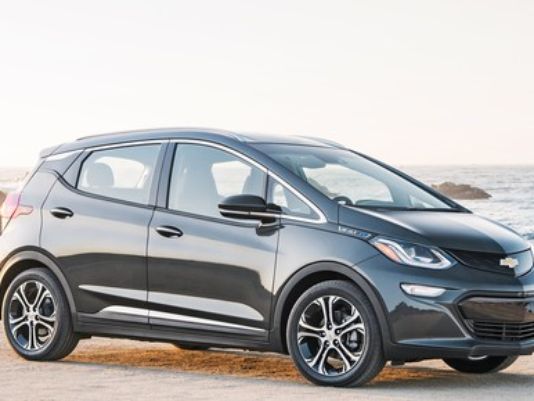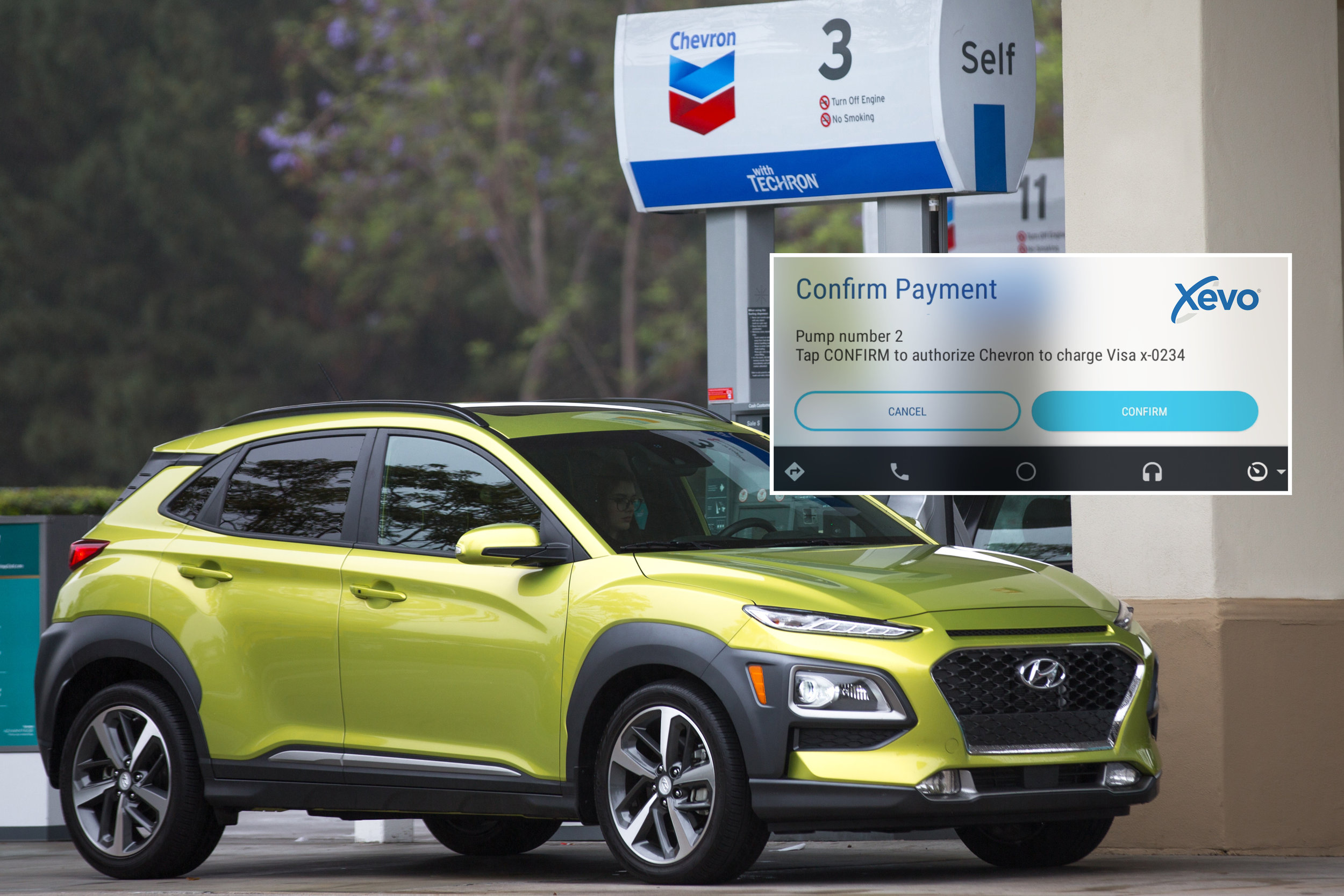EVs Are Takin' Our Jerbs!
Electric vehicles are all fun and games except for the fact that they contain 30% fewer parts than internal combustion vehicles. While, to most of us, that’s a good thing because it means less can go wrong, it also means there’s less to make. So while many new jobs are created in the fields of battery and motor technology, in Germany alone, as many as 75,000 engine and transmission jobs may be lost if as many as 25% of vehicle sales are electric by 2030. German labor representatives are on the case now, trying to put together plans to maintain jobs by retraining workers in new, relevant fields, or basically, what we refuse to do in America while instead pandering to people who don’t want to give up their careers working in unskilled labor areas that are obsolete. At least one country understands progress!
WRC goes All-EV
The FIA World Council this week approved big changes to the World Rally Championship, moving vehicles to a common motor setup, and those motors will be all-electric. They’ll also use common batteries and a common chassis, but the parts around those - suspension, steering, equipment, etc. - will be up to each team. In that regard, it won’t be entirely down to driver skill because they’re all driving the same car and they will all have the same power, 670 horses from twin electric motors powering all four wheels. The common components will help keep costs down, which has been a growing problem in racing across many series, and is the reason there’s only one team in the top level of the World Endurance Championship. Plus, the relatively short sprint distance of rallying is much more well-suited to electric vehicles compared with endurance racing because of range concerns. I think for many viewers and spectators though, it’s going to be hard to get over hearing the absolute chaos of turbocharged motors hurtling steel and plastic through woods and along cliffs. As for the people living along those cliffs though, they’ll probably really appreciate it.
GM Exec Crashes at Really Bad Time
If you’re a skilled driver who loves vehicles and you happen to crash a car on the track during an Indy car race, chances are you’ll be a bit sheepish but it’s okay, you’re a race car driver and this happens sometimes. But if you happen to be the pace car driver and you wreck the pace car, causing a half hour delay in the start of the race because you spun your Chevy Corvette ZR1 into a wall, you will feel mortified. One can’t help but feel a bit sorry for GM EVP of Global Product Development Mark Reuss, who did just that before the Detroit Grand Prix of Belle Isle this week. Even Indy 500 winner and fast circle man Will Power jumped to his defense saying the corner Reuss took is a bit off-camber and unloads the rear wheels, causing slippage. He even went so far as to issue a really painful apology that he 100 percent didn’t have to do because if you can’t imagine feeling exactly how he felt when he crashed that car in front of thousands of people, you need to be put on an island far away from people because you are a sociopath.
Come On and Take a Free (Autonomous) Ride
Great news for Californians as a new rule has just gone into place allowing you to be picked up by a fully autonomous vehicle. In even better news, the companies running these vehicles can’t charge you a fare for the journey because this is all in the name of testing technology and not capitalism. Well it’s in the name of future capitalism. But focus on free today. Problem is, only one company has applied for a permit to test fully autonomous vehicles in the state, and these systems aren’t exactly totally safe, as we’ve been seeing recently, so maybe don’t hold out for a rare free ride from a company that may kill you.
Tesla Investor Call Sans Fireworks for Once
Tesla held its annual stockholders meeting this week and we got some answers to boring bonehead questions without a healthy dose of attitude for once. The bad news is there is no real super interesting news, but the good news is there’s no real super interesting news. Musk said production of Model 3s is humming right along and they anticipate reaching 5,000 units per week by the end of this month, but right hand drive and base models are still going to have to wait until next year. He said the Model 3 was beating its rivals in sales, namely the BMW 3 series, Audi A4, Lexus IS and Mercedes C-Class. Hidden in that little gem was the fact that nearly a quarter of all Model 3 reservations have been canceled, either by the company or by buyers. While that sounds like bad news, to have that many cancellations and still be outselling the competition really illustrates the ongoing hype around and interest in the car. Finally, Musk said the Model Y was on schedule for release in 2020 along with the new Roadster and Semi. He also hinted that sometime after that, Tesla would be working on a Volkswagen Golf-sized hatchback, which makes sense since it’s the best-selling car in Europe. One can’t help but wonder if, by the time they get around to it, if Volkswagen won’t already have a mass-market electric hatchback on sale, beating them to the punch. Between the eGolf, the Golf GTE and the various VW ID cars, they have an awful lot of irons in the fire.
Lamborghini Awaits Worthy Battery Power
As for Tesla’s competition, they won’t be getting any from Lamborghini, at least for a while because the Italian supercar manufacturer says no battery exists yet that is worthy enough to be bestowed upon one of their raging bulls. Chief Technical Officer Maurizio Reggiani said that they’re aiming for brutal acceleration, a top speed of at least 186 and the range to be able to complete three laps of the Nurburgring. Given that the Nordschliefe is only 12.9 miles, achieving a range of 40 miles seems awfully doable, but I bet you’d be surprised how quickly that range disappears when you’re pushing a Lamborghini as hard as it’ll go around the German forest. But one needs only look at Tesla’s Roadster for evidence that batteries with incredible acceleration and high top speeds remain only a few years away. Even their top of line Model Ss feature an aptly named “insanity mode” which is damn quick. Lamborghinis, however, are permanently stuck in insanity mode, which is sort of why we like them so much.
Your Next Honda, Powered by GM
Tell me if this sounds familiar – A friend of yours is shopping for a car and wants something efficient, so you suggest the Chevy Volt. You get the response, “Yeah, but I want something reliable, so I’m thinking Prius or Insight." Well, the next time you have that conversation, you can fire back, “Yeah, well Honda likes General Motors’ battery technology so much that they recently signed an agreement to use their batteries in future electric vehicles.” Because that just happened this week. If you really want to turn the screw, you can say something like, “Honda is so far behind on battery technology, the deal really isn’t even a collaboration. The deal basically just gets GM a better deal because they can buy more batteries in bulk and then give them to Honda. They may be collaborating on hydrogen fuel cells in a more equitable partnership, but if you buy a Honda electric vehicle in the future, just know you’re basically getting a GM.” That’s not entirely true because motors and transmissions and well, the rest of the cars will be different, but sometimes it’s just good to knock people down a peg or two if they’re blindly brand loyal.
Hyundai’s Connected Car Tech Detailed
Are you the type of person who is too lazy to swipe a credit card or get out of your car for some nachos? Well Hyundai is designing a system just for you! Their Hyundai Digital Wallet and access to purchasing platform Xevo will allow drivers to pay for things like food and fuel and parking directly from the car without having to reach into your pocket or purse to get your preferred payment method. Before long, the steering wheel can just be replaced with a robotic arm that shoves churros into our mouths as the vehicles drive themselves to our destination.
While everyone loves churros, not everyone loves big brother, and a portion of Hyundai’s connected car tech pertains specifically to driver analytics, which the car will collect and share with a company called Verisk, who will give you a Verisk Driver Score, which can then be passed on to your insurance company if you either give them permission or simply don’t tell them not to. This is allegedly to offer tips and discounts on courses to help improve driving and not to tattle to your insurance company that you’re a dangerous driver, but I think the rest of the world can join me in issuing a collective fuuuuuuuuck that on this plan. Some drivers certainly could use some help not sucking, but I will hold myself responsible for informing them of their inadequacy by way of horn blaring and wild gesticulations.
Hyundai Missed the Diesel Bus
And poor Hyundai, they really try, but sometimes, they just kind of look like the guy at a hockey game who is so busy playing Pokemon GO that they miss a goal getting scored and then look up like “oh, what happened, do I clap now?” This week was one of those times because immediately after Nissan and Renault announced that they were both discontinuing development of diesel engines, Hyundai bursts into the room and is like “here it is, our new 2019 Tucson, which features a mild hybrid diesel engine!” Everyone’s like “oh, did he not hear the news?” I mean, truth be told, Mazda has some diesels coming up too, but these are going to be hard sales in Europe where diesels are tanking harder than the Las Vegas Golden Knights right now.
Most & Least Expensive Cars to Insure for 2018
Speaking of insurance, we got a couple of lists today of the most and least expensive cars in the country to insure. The top five most expensive included the Dodge Challenger, which no doubt made the list because of its Hellcat version, and the Toyota 86 and Mitsubishi Lancer, which made the list because they’re driven by young reckless kids. Topping the list though were the Mercedes S-Class and the Tesla Model S, undoubtedly earning their places because of high repair costs and the incredible amount of technology in each.
As for the cheapest to insure, there were predictably a bunch of Toyotas and Hondas, some GMC vehicles, most full-size trucks and, interestingly, the Chevrolet Corvette, which clocked in as the 12th cheapest car to insure. Ahead of it were a bunch more trucks and luxury crossovers and the Jeep Wrangler, which was number six, but the absolute cheapest car to insure in the U.S. this year was the Subaru Outback with its Eyesight forward collision avoidance technology. On average, buyers paid just less than $540 total per year, which is just about half my bill for the GTI, which is only moderately depressing. But it makes sense. They have great visibility, good reliability, good crash test ratings and are driven by crunchy dog-having, oatmeal-loving hippies who never exceed the speed limit and clean up their campsites after themselves. Not that insurance companies would profile people like that.
Coder Boy’s Wild Ride
In a bizarre story from Virginia this week, a National Guard soldier got hopped up on drugs and stole an armored personnel carrier, then got engaged in a not-so-high speed chase with police after which he was arrested and charged with a whole slew of crimes because, go figure, the National Guard doesn’t appreciate you stealing their things. An APC is basically a tracked tank but without a turret and with a larger interior to accommodate the transport of troops. It’s big, it’s tan, it’s hard to miss flying down the streets of Richmond. Making the story even more bizarre is that this soldier is a sort of well-known coder who made an anti-social justice variant of a secure web browser and tried desperately to get the attention of an accused sexual abuser. Nobody is still sure why he stole the APC but cocaine is a hell of a drug, so maybe he decided “well, it’s there and probably more fun than an Uber home.”
It’s Rainin’ Merde
Finally, in truly disgusting news this week, a woman and her son in British Columbia, Canada were driving along at about 160 miles or a billion kilometers as they call them up there, from Vancouver when they were suddenly struck by a cascade of what appeared to be sewage flying through their open sunroof. One minute, you’re cruising along enjoying one of the many beautiful days the Pacific Northwest has to offer, the next, you’re getting pink eye from someone taking the afternoon flight from Philadelphia. The driver suspects it was sewage from a plane that just so happened to have the supreme bad timing and placement to hit her open sunroof, which is possible, but rare and hardly a reason to keep your sunroofs closed out of sheer paranoia. But can you imagine how much worse it would’ve been if she had been driving a convertible?
Authored by
Devlin Riggs






















